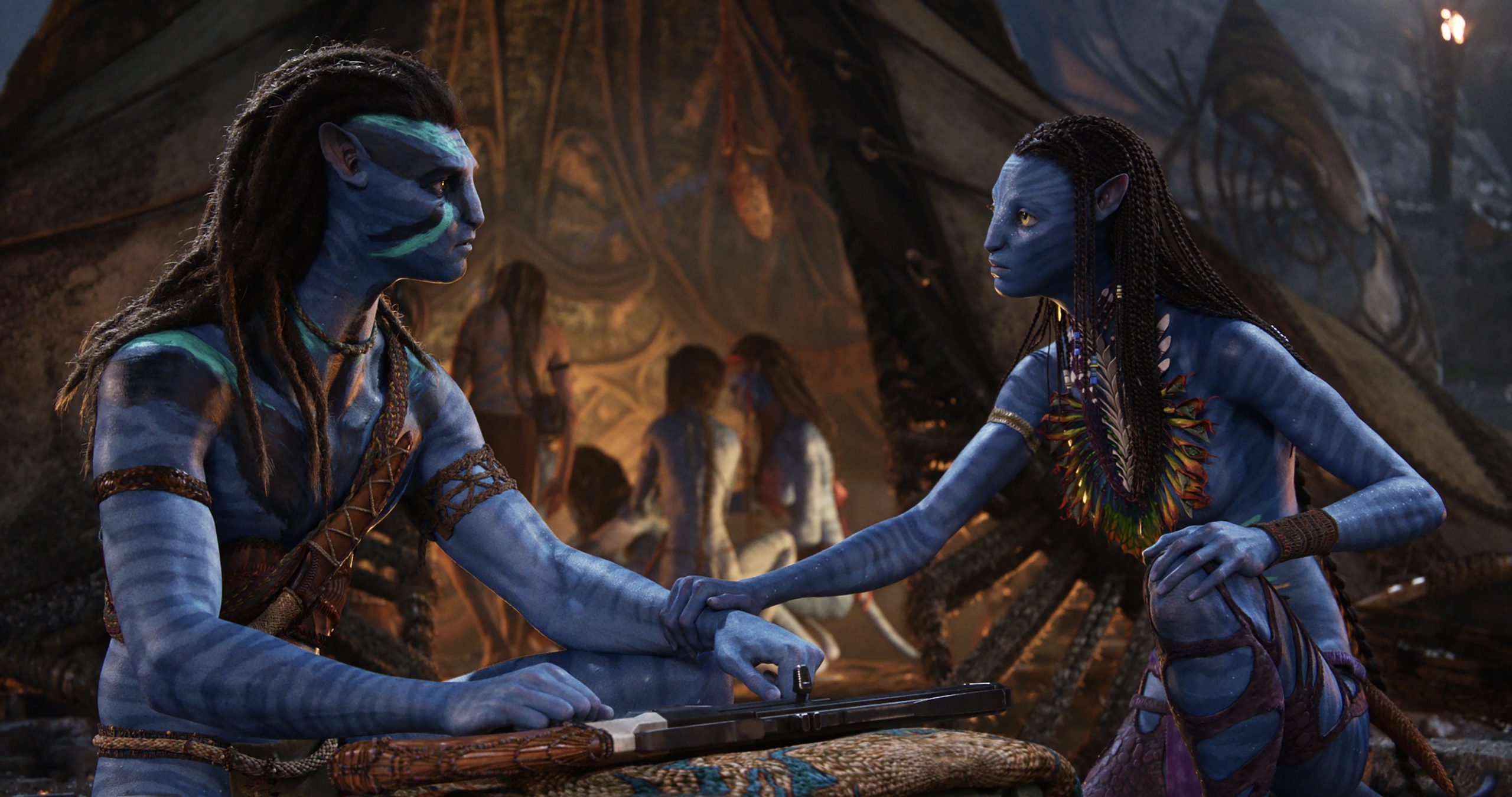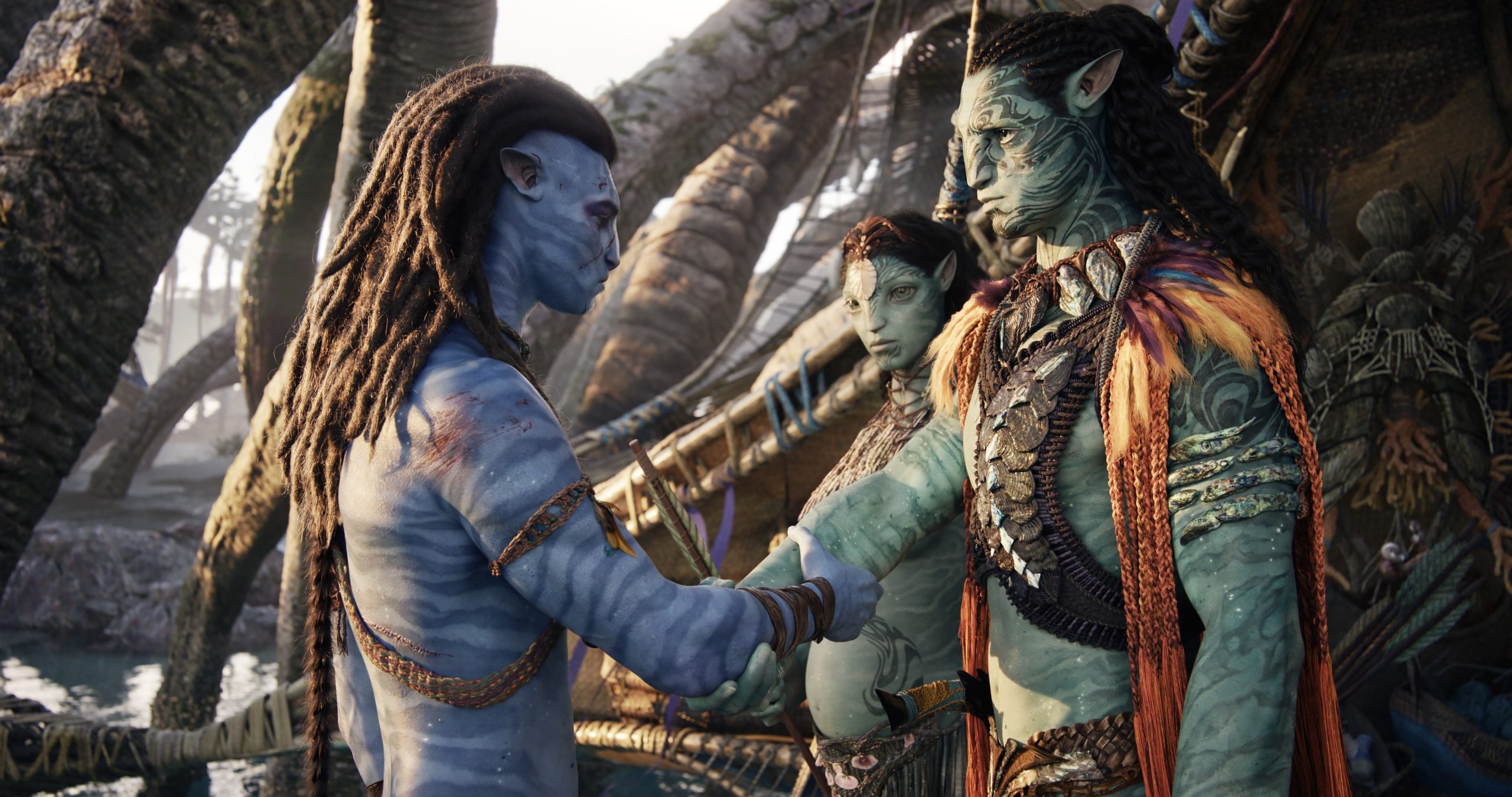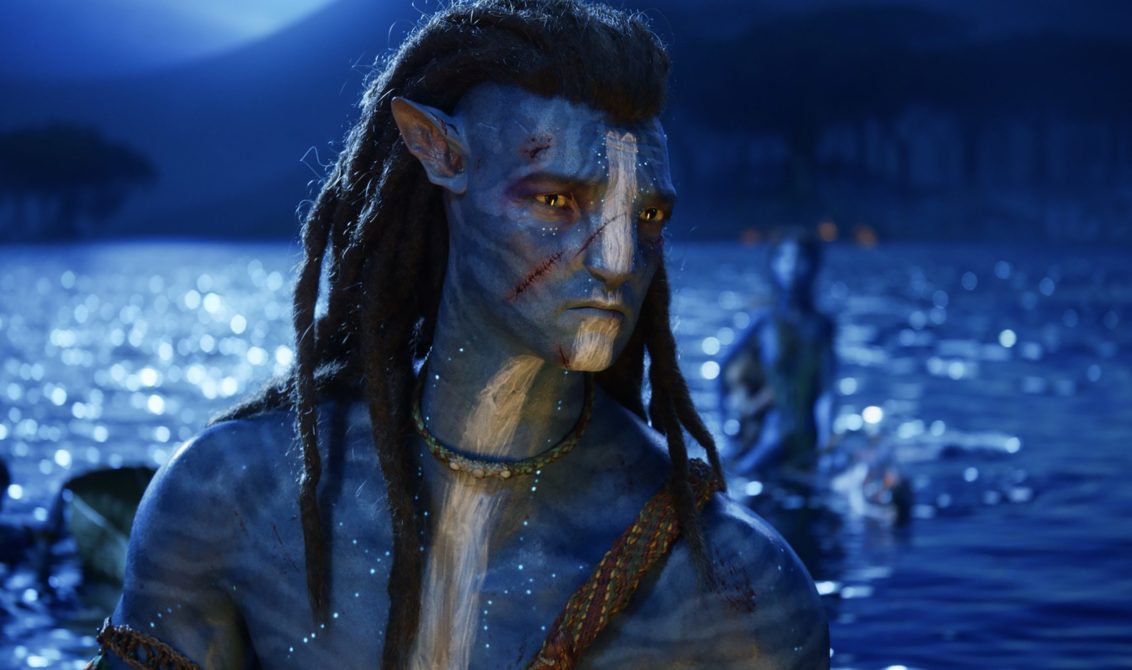 By Zach Goins
By Zach Goins
December 15, 2022
It’s been nearly 13 years since director James Cameron changed the game with Avatar. The first trip to Pandora in 2009 simultaneously shattered the box office, became a global phenomenon, and revolutionized visual effects on screen.
Over the following years, inundated with superheroes and cinematic universes, the general public seemed to forget about the wonder of the film, with many questioning Avatar’s lasting cultural impact. That won’t be the case with Avatar: The Way of Water.

The long-awaited sequel supersedes the first film at every turn, from the jaw-dropping visuals to the compelling, emotional storyline and the performances themselves. The Way of Water is an epic spectacle in every sense of the word, and well worth the wait.
Set over a decade after the events of the first film, The Way of Water picks up with Pandora at peace– but not for long. Jake Sully (Sam Worthington) remains the leader of the Na’vi forest clan with his mate, Neytiri (Zoe Saldaña), and their ever-growing family of five children. But when the Sky People from Earth return with a vengeance, a decade of peace is shattered.

Rather than just mining Pandora for its resources, the humans have become increasingly more desperate as Earth nears extinction, and now they intend to make the Na’vi planet home. In order to do so, they must eliminate the natives– which starts with killing Jake Sully. Leading the charge is a reborn Colonel Miles Quaritch (Stephen Lang), whose consciousness was extracted prior to his death in the first film and uploaded into an Avatar body.
When Jake Sully realizes it is him being hunted rather than his entire tribe, he and his family flee the forest and take refuge with the Metkayina Clan of the reefs, introducing a whole new oceanic ecosystem of Pandora to explore.
One of the many elements that makes The Way of Water so impressive is its ability to simultaneously serve as a blockbuster action epic, an intimate familial drama, and a stirring environmental commentary. The film so naturally balances all three tones without a single abrupt transition or out of place scene. Cameron’s affinity for the ocean is well known, and it’s abundantly clear through his storytelling without ever feeling preachy. The battle sequences are frequent and intense, juxtaposing the natural beauty of Pandora with the raw brutality of its human invaders, and Cameron doesn’t hold back on the violence. But where The Way of Water truly separates itself from its predecessor– beyond the visuals– is in its emotional core.

The first film is critiqued for lacking a bit of substance behind all its glitz and glamor, but that is certainly not the case here. The addition of Jake Sully’s children and the reef tribes significantly expands the cast of characters, with each one playing a pivotal role in Cameron’s emotional storytelling. Worthington has honed his acting skills significantly over the last decade and carries much of the film’s emotional weight, but Britain Dalton (who plays the younger son Lo’ak) is equally impressive. The father-son dynamic between the two sets up some of the film’s most moving throughlines, and Lo’ak’s struggle to find his own identity allows Dalton to push the character to emotional depths yet to be seen. Over the course of three hours, each character grows and develops, connecting with viewers and ultimately making the film’s third act gut punches feel as earned as they are emotional.

For those skeptical of returning to 3D in 2022, the hesitation is understandable. The format peaked in the late 2010s shifting from revolutionary to gimmicky, and big screen blockbusters have rarely looked back. The Way of Water blows the first film out of the water (literally) with jaw-dropping visuals and immaculate details and beauty. It takes a few minutes to readjust to the high frame rate Cameron uses, which at times can produce a video game-style effect early on, but after your eyes adjust, it’s full immersion into the beauty of Pandora.
After spending the last decade-plus forgetting about the first Avatar, it’s going to be hard to stop thinking about The Way of Water. It’s an upgrade on all fronts and truly worthy of seeing on the biggest screen possible. Beyond the look of the film, it’s the feel that works so well. In a cinematic world so alien, Avatar: The Way of Water, manages to feel very human.
Avatar: The Way of Water opens in theaters nationwide on December 16, 2022 and has a runtime of three hours and 12 minutes.
Read next:
https://clture.org/barack-obama-music-list-2022/


